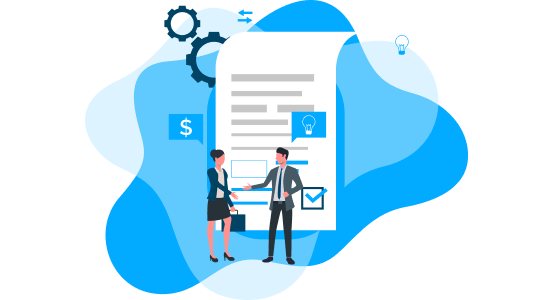This is the basis of prototype development. Teams work with stakeholders to determine their needs, business goals, and any particular requirements. Deeper understanding here ensures planning for the system more accurately and truly.
Understanding Software Development Methodologies
The results of applying Agile, Scrum, DevOps, Lean, and Prototyping methodologies across the software development life cycle have been consistently proven over nearly a decade of delivering high-quality solutions. At STS Software , our reputation as one of the leading software outsourcing companies in the United States stems not only from our robust processes but also from the dedication, innovation, and talent of our vibrant in-house team.

As one of the largest software development companies in the US, STS Software brings extensive technical expertise to every project, backed by a team of over 300 skilled software engineers. Our developers are proficient in a wide range of programming languages and adaptable to various client-specific working models. This flexibility ensures we can seamlessly integrate into any software development environment while maintaining speed, efficiency, and high standards.
To understand how each of our core methodologies contributes to project success, explore the detailed sections below. Each methodology - Agile, Scrum, DevOps, Lean, and Prototyping - is outlined clearly to showcase its principles, benefits, and how it can align with your unique business goals.
Agile
Scrum
DevOps
Lean
Prototype

AGILE
Agile by Design – Driven by Clients – Built for Speed
Agile methodology helps software development shape business needs into working, high-performance solutions. As one of the most established software development methodologies, Agile caters to flexible planning, continuous improvement, teamwork, and early deliverables.
At STS Software, Agile methodology is commonly used for service-related projects, custom software development, and design-centric projects. Continuous collaboration with the customer is of utmost importance to us because it allows the team to adjust project plans in real-time, particularly when features are still being formed or clarified. This inherent flexibility allows us to quickly adapt and improve the product as business goals change.
Here are a few key Agile principles that guide us through the development process:

SCRUM
Focus on Priorities - Enhance Collaboration - Drive Iterative Development
Scrum is one of the Agile development frameworks that is often used in managing the team tasks in rapid software development environments. The idea of Scrum comes from the collaborative efforts of a rugby match, where teamwork and mutual understanding are the essence of the game. Scrum believes in team spirit and reasonable resolution to problems. However, while most are ordinarily classified as a methodology, the truth is it is, in fact, more of a framework; that is to say, it provides adequate structured flexibility to deal with complex questions in the provision of high-quality software solutions.
The basic purpose of Scrum is effective teamwork. Scrum facilitates working together as one among members, learning from successes and failures, and working on adaptations through continued reflection and improvements. Just like the rugby team learning from all their games, the Scrum team will be encouraged to reflect on how they have done their work, identify problems they faced, and work towards minimizing these problems in the future.
Scrum's iterative approach allows its teams to adapt to the dynamic project requirements, which extends its usability in other sectors apart from IT. One reason that really builds the appeal of Scrum is its mode of continual communication amongst team members. Daily meetings allow team members to share any bits of information amongst themselves on what is happening, plan for what needs to happen, and tackle any issues as a force united.
The Scrum framework recommends small teams of about 7–10 members to ensure effective communication and quick collaboration. It defines three key roles that contribute to the team's success:

DEVOPS
Foster Cooperation - Ensure Transparency - Drive Automation
DevOps is a methodology that unifies development (Dev) and operations (Ops) to collaborate throughout the entire software lifecycle-from design through deployment and on into support-for more efficient processes and automated continuous collaboration and improvement that boost productivity.
Built on agile precepts, DevOps automates manual tasks for improved efficiency in teams as well as quickened software delivery.
The following are key processes and tools would-be users of DevOps typically find:

LEAN
Delivering Client Value – Compact Teams – Dedicated Project Focus
Lean Software Development is the methodology that describes the philosophy of: "to eliminate waste and retain only value-added activity for the customer." The underlying principles of Lean are respect for people and continuous improvement. Methods of Lean facilitate the optimization of the whole software development process rather than treating tasks as isolated activities.
Though the origins of Lean are in manufacturing, it proved successful and slowly found applications in other areas, especially IT and software development. In this area, Lean is quite often put to use in Agile Software Development so as to come up with shorter development cycles and enhanced team efficiency.
Lean Software Development benefits include: - Cutting the time and costs by eliminating any unnecessary work - Ensuring product quality continues to be tested throughout the development process - Promoting collaboration and communication within teams - Ensuring the fast delivery of features that matter
When calling themselves Lean, organizations give authority to those individuals closest to the product and customer, as their insights are often the most practical improvement ideas. Greater ownership, proactiveness, and efficiency across the whole range of phases of the project will follow.
The basic concepts of Lean methodology are as follows:

Define Value

Map the Value Stream

Establish a Continuous Workflow

Implement a Pull System

Pursue Perfection

PROTOTYPE
Continuous Growth – Creative Solutions – Smooth Project Flow
Prototype Software Development is that it focuses on early testing and iteration feedback. The software, at the end of this iteration, will be trustworthy to users. The process follows the "design-test-correct" cycle, which allows the effective collaboration of developers with users until the system is ready for launch.
There are 6 essential steps under the prototype SDLC model:

Step 1:
Collect and Analyze Requirements

Step 2:
Quick Initial Design
A first, quick but basic design is generated so the user has a visual idea about how the system will work. This low-fidelity mock-up helps to set up a direction before investing too much in development.

Step 3:
Build the Prototype
This prototype is the basis of the first design phase-prototype built as a working sample. The basic feature is really what the software handles, giving users a chance to interact with a working sample of the software.

Step 4:
Gather Initial User Feedback
Users will review the prototype and give their feedback. What works well and what needs improvement become standard in shaping the next round of the system.

Step 5:
Refine the Prototype
Based on that feedback, the prototype continues to refine itself using iterative feedback from users. This process continues until a product lives up to the expected performance and usability standards. Only after the user's approval, does the team begin developing the system completely.
Step 6:
Final Implementation and Maintenance
When a prototype has been successful, the product will be completed, validated through testing, and fully deployed. Results from past regular maintenance will be used to check whether or not the success is in terms of stability, performance, and longevity.
STS Software – Reliable Software Development Outsourcing Company
At STS Software, we design and deliver custom-built solutions that accelerate digital transformation and align precisely with each client’s unique business objectives. We call this approach Software Tailored for Success - a commitment to creating measurable impact through carefully selected development methodologies. Whether you're looking to build a product from the ground up, bring an idea to life, or modernize a complex system, our team of seasoned consultants is ready to offer consultations and project estimates that reflect your specific goals and technical requirements.

Over the years, STS Software has been recognized for its commitment to software quality and client satisfaction. We've partnered with leading organizations across the United States, delivering solutions known for their reliability, scalability, and long-term business value, always backed by our dedication to excellence and results-driven collaboration.


